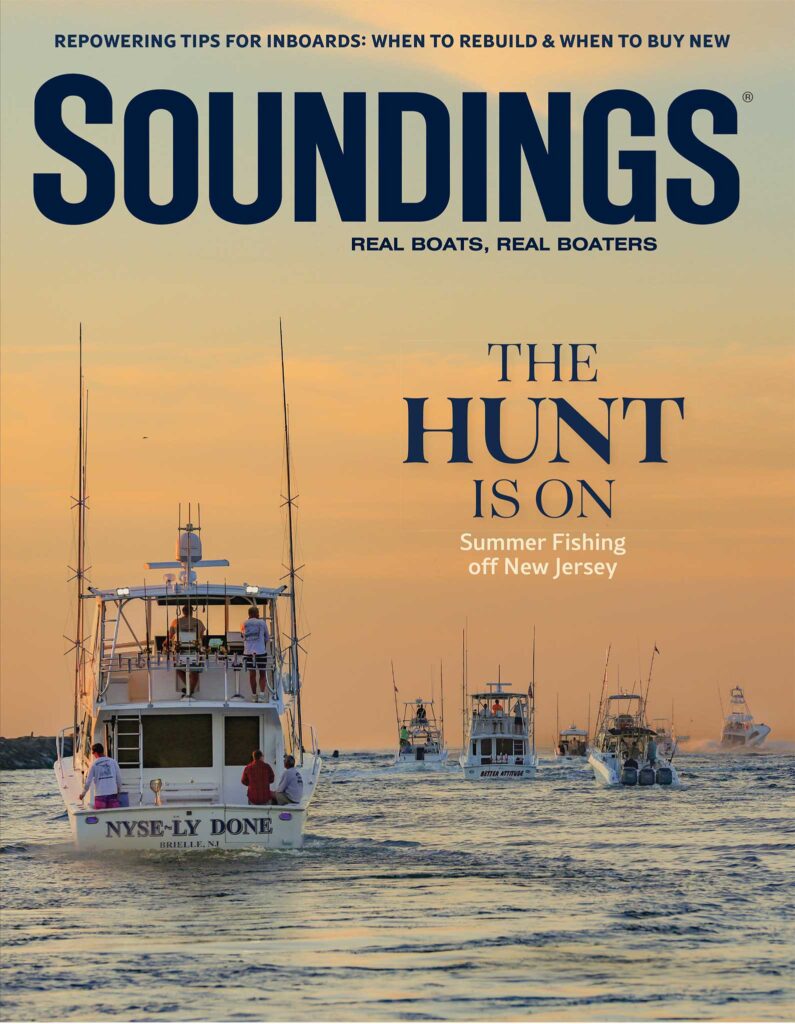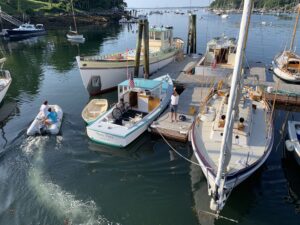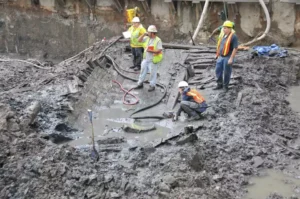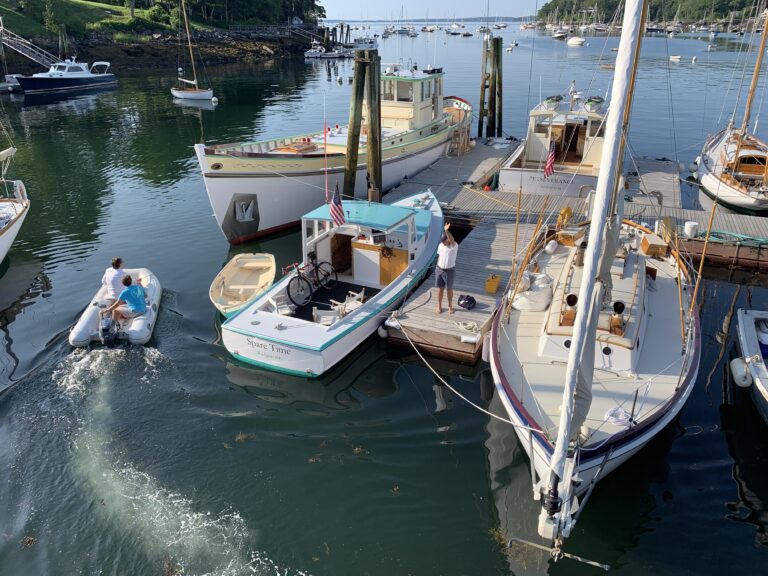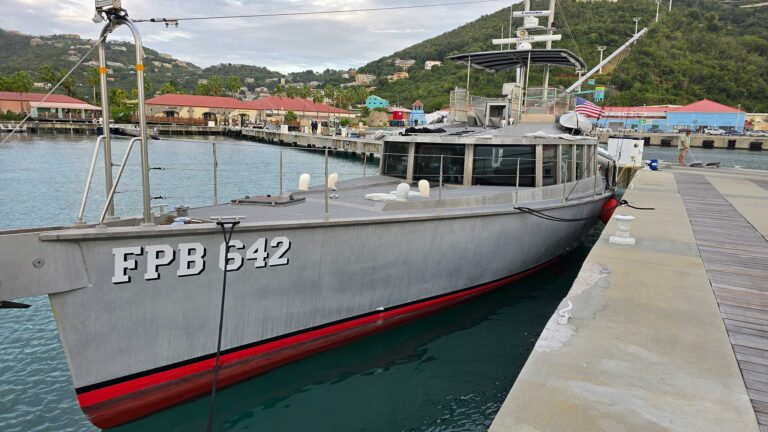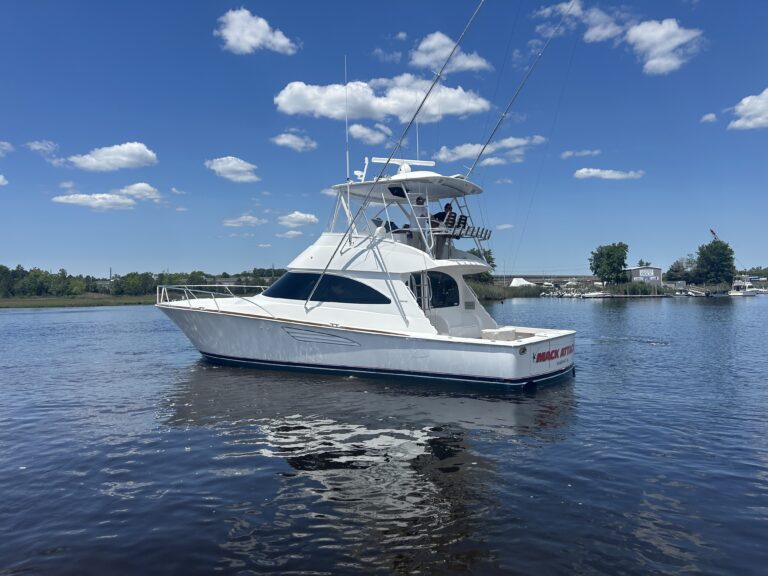Eric Brown was aboard the 130-foot Argo, wrapping up for the night along with the rest of the crew, when Manu San Félix asked to have a word. “It was a classic day,” Brown told Soundings. “But when we came back that night, Manu came up to me—I’m the coral reef scientist on board the boat—and he says, ‘Eric, I found something here.’”
Both men are part of the National Geographic Society’s Pristine Seas project, which is exploring the tropical Pacific to improve conservation efforts. The Argo is like a modern-day version of Jacques Cousteau’s Calypso, trying to get to places that human beings rarely, if ever, go. San Félix is a marine biologist and underwater image director. He’d been capturing photos and video all day and had noticed a big, dark … something.
“They actually thought it was a shipwreck because there are a lot of shipwrecks in the Solomon Islands dating back to World War II or even before,” Brown says. “We’re talking and I said, “Ooh, this is quite massive. This is unusual. We should go back and explore this guy a little bit more.”
The Argo needs a good reason to change its schedule in that way. The team tries to be flexible, but a lot of remote island communities are counting on the ship to reach them. Lingering in one place can mean less attention paid to other places that need help defining and protecting underwater ecosystems. But in this case, the expedition leader agreed to stay and do another dive the next morning.
Brown used his experience mapping and measuring giant coral to set up a plan for the dozen divers who met aboard the Argo that night. They’d go down after daybreak in six teams, some deeper than others, some focused on width, others on height—all in an effort to measure what turned out to be the largest coral ever discovered on the planet.
“It’s a big production,” Brown says. “When you’ve got a circumference of 183 meters, that takes a little while to swim around. It’s like two football field lengths.”
And, they think, this coral is unusual for more than its size. It doesn’t appear to be a reef with different types of coral, but instead one mega coral colony of the Pavona clavus species. “If you were to take a tissue sample all around this colony from multiple places, it would all be the same, versus a big reef that would be different individuals,” Brown says. “We’re going to go back next year to confirm that this is one genetically distinct colony.”

The top of the mound begins around 45 or 50 feet below the surface, he says. It’s on a slope and goes down to about 130 feet. That’s deeper than most recreational scuba enthusiasts go, so even if recreational boaters had been out diving in this part of the Solomon Islands, they likely wouldn’t have realized the full size.
This coral is also unusual for surviving in a region that has experienced widespread coral devastation.“Nearby this one mega coral, we found large stands of dead coral and sections of reef that had been decimated by a coral bleaching event or a cyclone that had come through and left a lot of reef rubble,” he says. “There were some sections of the Solomon Islands that didn’t look so good, and I would say the disturbance event had taken place in the past five years.”
A giant coral holding out the way this one did, he says, is real reason for hope. Some predictions suggest that all the coral reefs as we know them will be gone by 2050 or 2100. If a species like this one can survive, that’s important, Brown says, because reefs occupy only 0.2 percent of the ocean’s area, but they support more than 25 percent of marine species.
This survivor may have been growing for more than 300 years—and it’s exactly the kind of giant the expedition is trying to find and protect. The team discovered it in late October but withheld the news until after the U.S. presidential election in November, hoping that by then, more people would see the story and understand the discovery’s significance.
“Let’s say you have a fish that’s 1 meter in size,” Brown explains. “That’s a good-size fish. It produces X number of eggs and sperm. The fish that’s 2 meters doesn’t produce twice the number; it can produce eight times the number. Once something achieves a certain size, the amount of reproductive material increases exponentially. The goal is that when you can protect the really big individuals, that’s when you get the most bang for the buck—and coral will be the same because they have so much more surface area.”
Having found this survivor, Brown says, the team is now optimistic that more discoveries may lie ahead.
“The bigger hope is that we find ones that are even bigger,” Brown says. “Just wait.”
February 2025

